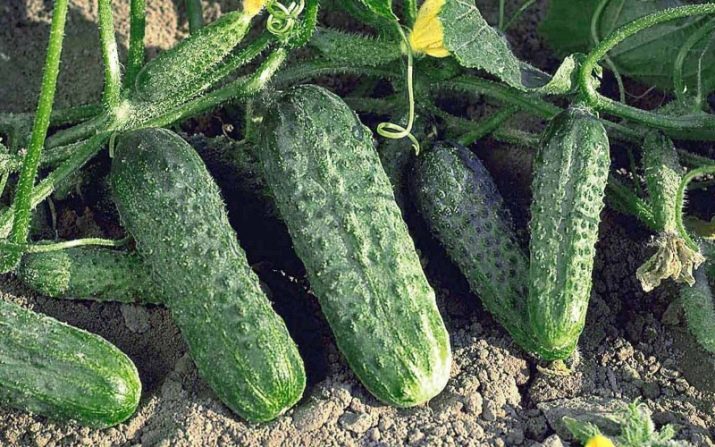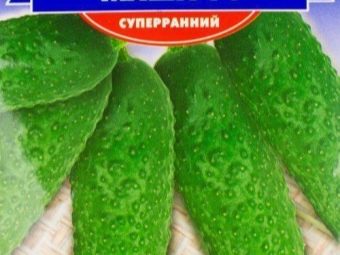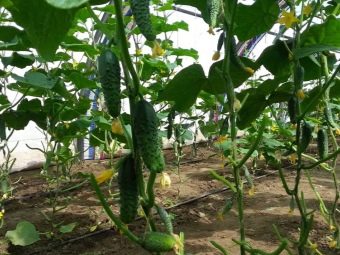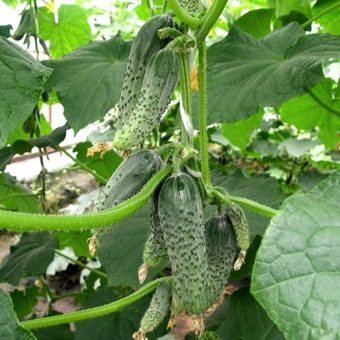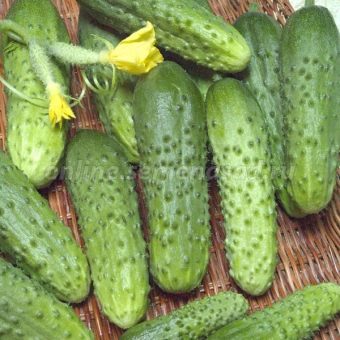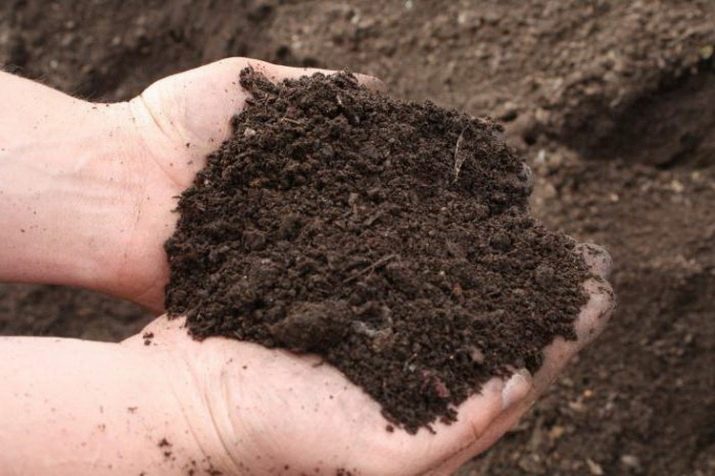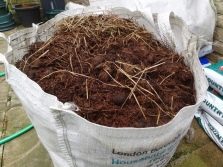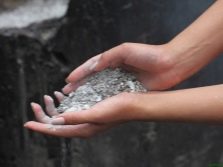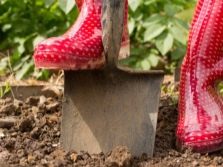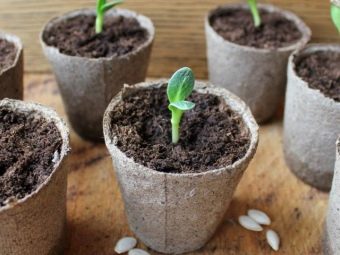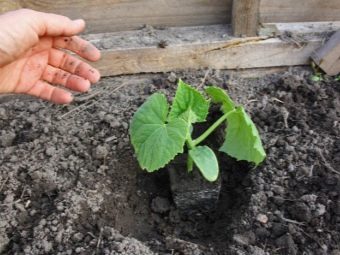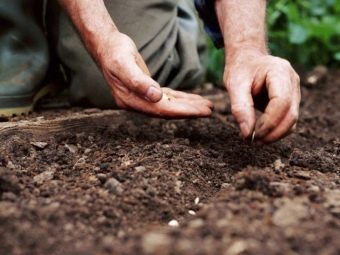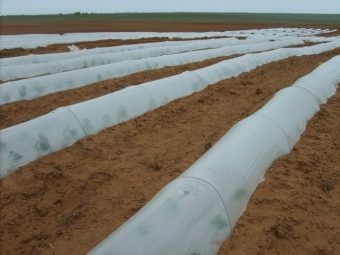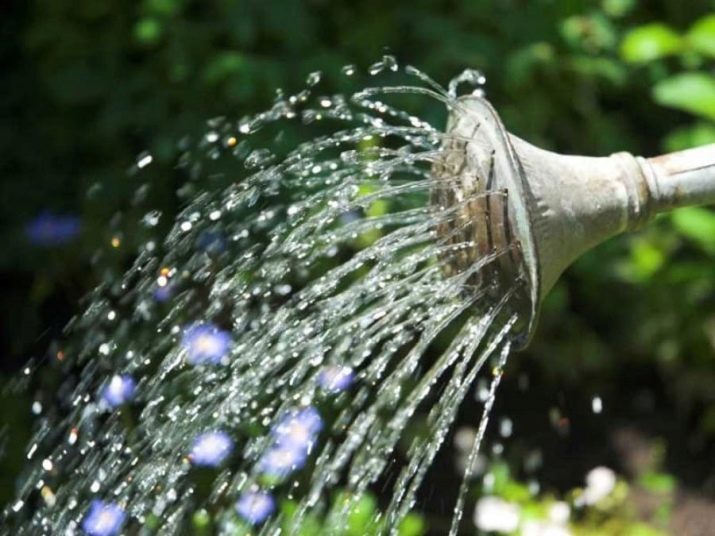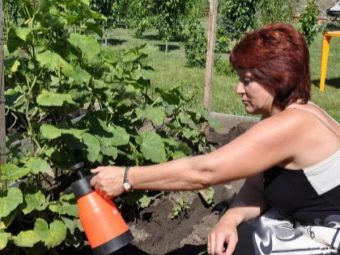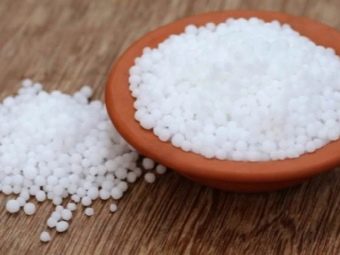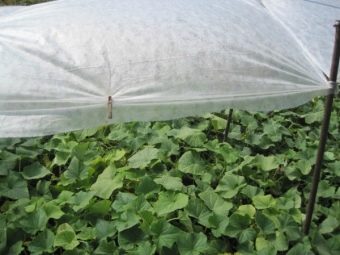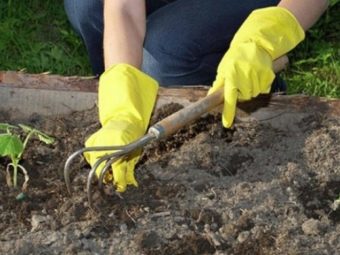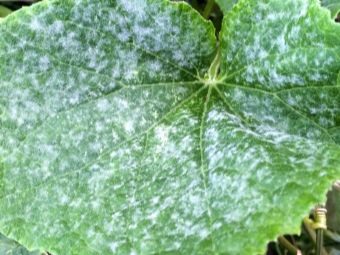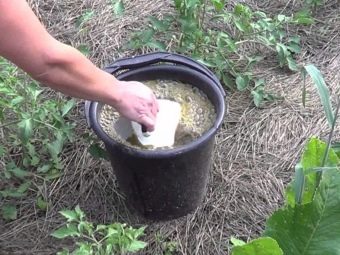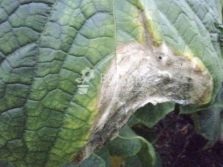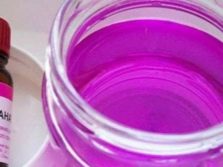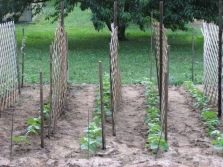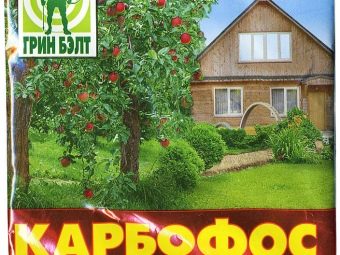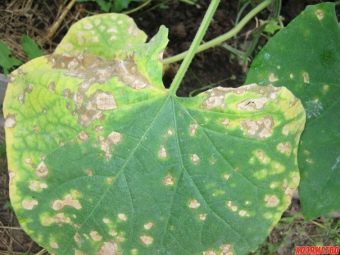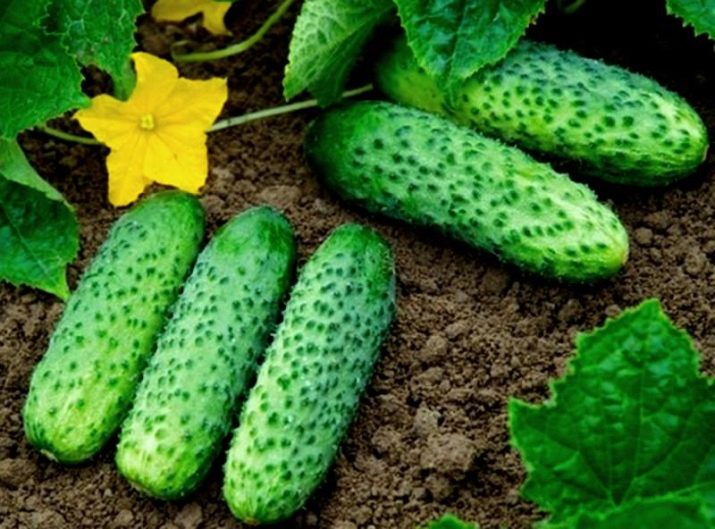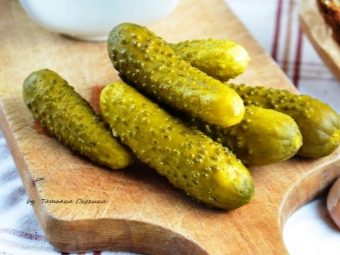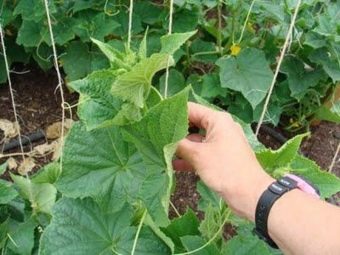Cucumber "Masha F1": features and cultivation
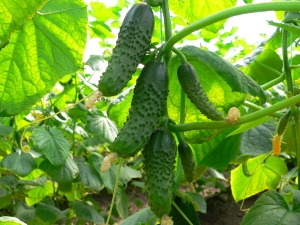
A high yield of cucumbers can be obtained by choosing a suitable variety for a given climate and soil characteristics of the region, provided that the plant is properly cared for. One of the most versatile and rather unpretentious is the Masha F1 variety.When growing a good harvest is guaranteed, which is collected in 1.5 months after planting.
Variety description
Cucumbers "Masha F1" is a hybrid variety, currently characterized as one of the earliest varieties of gherkins. Harvesting is usually done 40 days after the first shoots appear. Suitable for cultivation in soil and greenhouse, horizontal and vertical ways.
The variety belongs to the hybrids of the first generation, that is, it produces a rich harvest when planted. However, if seeds from a crop are used for replanting, the properties of the variety will not be preserved. In other words, this variety is not suitable for harvesting seed, it is necessary to purchase new seeds annually.
The characteristic of the plant indicates that the variety is powerful, but at the same time open, which facilitates the care of it and the process of harvesting. During the flowering period, more female flowers form on the plant, and, being a hybrid, this variety is self-pollinating.
The yield is high - each node is able to bring up to 5 cucumbers at a time, and from 1 m2 up to 11 kg of crop is harvested. In this case, due to the simultaneous start of flowering, the crop appears amicably.
Fruits are small with small seed chambers. They have a dark green tint and a cylindrical shape, elastic skin with large tubercles and a pleasant taste without bitterness. The average size is 7-9 cm, or rather, upon reaching these dimensions, it is recommended to remove the fruit. Cucumbers "Masha F1" can grow more, but it is not the best way reflected in their taste. Good for pickles, but can be eaten fresh.
In short, the harvest is attractive gherkins that look good and taste good. In addition, they have good transportability. High yields are also guaranteed by the variety’s immunity to the most common crop diseases. First of all, we are talking about a cucumber mosaic, kladosporioz, and powdery mildew.
Landing
The Dutch company is engaged in packing of seeds of this grade. Seed material undergoes a multi-stage preparation at the factory, so there is no need for additional manipulation of seeds by the gardener. We should also note that the hybrid does not need to be soaked before sowing.
It is necessary to choose the right place to organize a cucumber bed. Gherkins of this variety are demanding to light and heat. At this stage, you should choose a place for landing, so that most of the day it is illuminated and warmed by the sun, and also protected from drafts.
In general, the soil may be different, but the variety has the highest yields on light, non-acidified, humus-enriched soils. Sandy and loamy soils with rather deep groundwater flow will be optimal.
Place under the beds need to dig up and make manure in the fall. If this has not been done, then the soil can be fertilized in the spring. Then a layer of manure is poured on the bed, and on top of it is a layer of fertile soils not less than 20 cm thick. The best preparation of the soil is to add 3 buckets of manure, a liter of ash and 100 g of nitrophosphate per 1 m2 from autumn. Ash should be used only wood, without impurities of plastic.
You should not plant cucumbers on the garden where melons, beets and zucchini were grown. In this case, the likelihood of developing diseases increases, as well as a decrease in yield. It should not be planted next to the crop with tomatoes.
When growing them in one greenhouse, it is better to separate them with a glass or carbonate partition.
Grade "Masha F1" can be sown in two ways.
Rassadny
Allows you to get the earliest yield and involves planting seeds in peat pots or plastic cups. It is necessary to place one seed in one container and provide a temperature of + 25 ° C at the time of germination. A week before the transplantation, the temperature is reduced to + 18 ... 20С.
After the appearance of seedlings and the formation of 4-5 leaves (at 23-25 day "life" of seedlings), they are transferred to a greenhouse or open ground. In the latter case, the beds are usually covered with foil.
The important point is that when disembarking you should make sure that the earth is warm enough and that night frosts will not return anymore.
Seedless
Involves placing seeds immediately in the ground. This is usually carried out at the end of May, although it is much more important in this matter to focus not on calendar dates, but on weather conditions. By the time of planting at a depth of 15-20 cm, the soil should be warming at least 15 cm. On the surface, these figures should be at least + 22C during the day, not lower than + 18C at night.
With a vertical landing on 1 square. m must account for at least 3 bushes, at horizontal this number can reach 5-6 bushes on the same area. Seeds do not need too deep, 2-3 cm will be enough. Immediately after planting, the seeds are covered with foil. After the first shoots appear, the film is usually removed during the day and left completely or partially closed at night.
Care
Agricultural technology in the cultivation of this variety involves the following drinking mode:
- watering the top layer of soil is carried out every day or every other day;
- for the first time, 1 liter of water requires 1 liter of water, as the gherkins grow of the same amount of liquid, 1 bush is required.
It is better to carry out drip irrigation. However, if it is impossible to organize it, it is necessary to pour water not to the roots of the plant, but into the dug grooves next to them. Water cucumbers need in the early morning or late evening, avoiding moisture on the leaves and watering in the summer heat. On cloudy days, watering is required less frequently.
When watering, be sure to use only warm water and a watering can with small holes so that the water does not erode the soil.
7 days after the appearance of green shoots, and then every 10 days you need to make fertilizer. Urea or slurry is generally used. As soon as the flowering period comes, the plant needs mineral fertilization. You can cook it by dissolving half a liter of ash, compost or bird droppings in a 10-liter bucket of water. Increase the yield at the time of the appearance of gherkins allow fertilizing with potassium and magnesium (10 g of substance are required for a bucket of water).
In addition to the calendar indicators of fertilizer, you should focus on their appearance. So, if the gherkin acquires a pear shape, the plant suffers from potassium deficiency. With the appearance of bright tips in cucumbers, the plant needs nitrogenous feeding.
This variety responds well to fertilizer with a solution of manure and ash, if we talk about mineral dressing, it is urea, ammonium and potassium nitrate, superphosphate. The latter are diluted in the amount of 20 g per 10 l of water.
In cool time it is recommended to produce foliar dressing with saltpeter solution. For spraying, 10 g of the substance is diluted in 10 liters of water.
By the way, the shape of the fruit can be said about the fact that cross-pollination of hybrids has occurred. In this case, cucumbers grow curves. And if they suddenly have a “waist”, this indicates the use of too cold water for irrigation.
When grown in greenhouses, the same fertilizers are applied, but before planting the seeds it is recommended to disinfect the structure and soil with sulfur checker.
In cool nights cucumbers need to be covered with a film or a special cloth. The latter can be left on a too hot day to protect the foliage from drying out. Agrofabric passes air and sunlight, without providing the greenhouse effect.
When grown in a greenhouse, the air temperature inside may exceed by 10-12C outside. Avoid overheating allows morning watering, splashing water into the air of the greenhouse (not on the bushes, but around them), as well as airing.
Fruit picking can be done on the 40th day after the first shoots. The larger the Masha F1 cucumbers, the less tasty they will be.In addition, the cultivation of large fruits retards the development of the next batch, which reduces yield.
It is important to regularly weed cucumber beds, doing so carefully, since the roots of the crop are very close to the upper layers of the earth.
To enhance the development of lateral shoots, you can pinch the top of the fifth sheet. It is recommended to pile bushes several times during the season. On one branch should not save more than 10-15 fruits, pick off the excess. This will avoid depleting the bush and, as a result, shredding the crop.
Diseases and pests
Due to seed treatment with fungicides, which are produced in the factory, the variety is resistant to most cultural diseases and pests. However, in some cases, the plant is still affected by diseases, in most cases, the cause is a violation of crop rotation and agricultural technology.
So, when growing cucumbers from year to year in the same place, especially in cold summer, there is a high probability of development of powdery mildew. Visually, it can be determined by the white bloom on the leaves, which is becoming more common. Cucumber bush gradually dries out and withers.
At the first signs, the plant should be treated with an infusion of cow manure diluted with water in proportions of 1: 5. The infusion time is a week, after which the cucumbers are sprayed. It is worth repeating the procedure every 10 days. If this does not help, and powdery mildew infects a larger area, diseased leaves should be cut off and thrown out of the site.
Because of the sharp change in temperature, the probability of root and white rot is high. The first affects the roots and looks like a patina on the roots, white rot covers the whole plant, covering it with a white patina. The affected parts then soften and rot.
Preventing rot is maintaining the right temperature, controlling that the temperature does not fall below + 15 ° C, hiding bushes for the night if necessary.
You can fight root rot by watering with a weak solution of potassium permanganate. When white rot is detected, it is necessary to tear off all the affected parts of the plant, powder the ashes. Next, the bushes are processed by preparing a solution based on 10 liters of water, where 2 g of copper sulphate and 10 mg of urea are dissolved. Consumption - 1 liter per 1 m2. Treated as plants and the soil around them.
In most cases, the use of trellis as supports for cucumber lashes allows to prevent the formation of rot. They allow the bushes to get more light, which ensures the harmony of the harvest, approximately the same size of gherkins.
Of pests for the variety can be dangerous spider mite. Evidence of its appearance is the emergence of white dots on the leaves, which then dry out and die. For the treatment of plants, you can use a solution of 60 g of karbofos in 10 liters of water.
With the defeat of slug, which gnaws the leaves and shoots of bushes, on the perimeter of the ridge, you can pour crushed eggshell. Hilling and sprinkling of the beds with a thin layer of lime or ash will also be effective.
Recommendations
Grade "Masha F1" receives mostly positive reviews of gardeners. They note a good yield, the variety is really super early. Pleases harvest the very first, especially when cultivated in the greenhouse. However, in the absence of heat and a lack of light, the plant forms few ovaries, which reduces yield. The gherkins themselves grow pale green.
Gardeners also say that the crop is ripening in harmony so that cucumbers do not outgrow, they have to be collected literally daily. After 2-2.5 weeks, cucumbers begin to disappear gradually. For some, it is convenient (first of all, if you live in a country house or outside the city and have the opportunity to scrub bushes every day), for others it is not too much.
To increase the yield, some summer residents recommend pinching the tops of the side shoots. This contributes to the growth of the bush and the formation of a larger number of ovaries.After collecting the first batch of the crop by the middle of summer, when the lashes begin to turn yellow, you can re-pinch. Pinch need a growth point to revive the bushes and extend the harvest.
Tastes are also subject to a positive assessment. Gherkins strong, crispy. With a small number of seed chambers, with the seeds tender. The small-sized gherkins are convenient to pickle and pickle, they are incredibly tasty in salted form.
Review the variety of cucumbers "Masha F1", see the following video.

